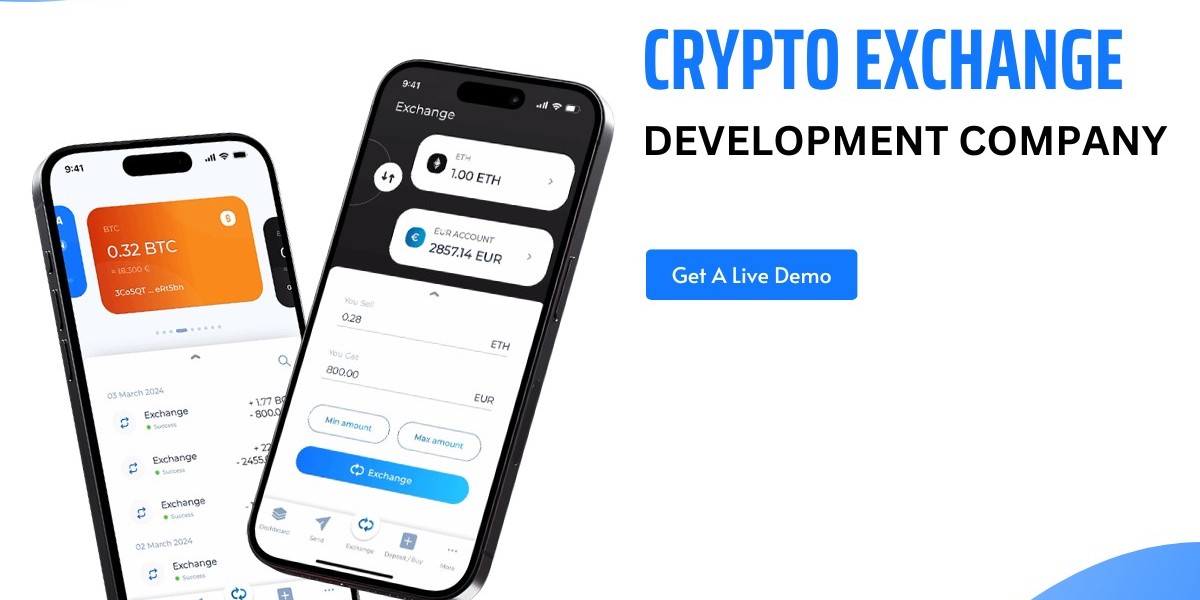In a world increasingly driven by digital innovation, the financial sector is undergoing a profound transformation. At the forefront of this revolution is the rise of cryptocurrency exchanges, the new financial hubs that are reshaping how we perceive, store, and transfer value. For entrepreneurs and developers, understanding how to build a robust crypto exchange is crucial to tapping into this dynamic market.
- Understanding the Crypto Exchange Landscape
Before diving into crypto exchange development, it's important to grasp the current crypto exchange landscape. Crypto exchanges serve as platforms where users can buy, sell, and trade various cryptocurrencies. These platforms can be centralized, decentralized, or hybrid, each with its own set of advantages and challenges.
- Centralized Exchanges (CEXs): These are the most common and user-friendly platforms, managed by a central authority. They offer high liquidity, fast transactions, and robust features, but are vulnerable to security breaches.
- Decentralized Exchanges (DEXs): Operate without a central authority, offering greater privacy and control over funds. However, they may lack liquidity and have a steeper learning curve for users.
- Hybrid Exchanges: Combine the benefits of both CEXs and DEXs, aiming to offer the best of both worlds—security, privacy, and user-friendly features.
Understanding these types will help you decide which model best suits your business goals.
- Key Features of a Successful Crypto Exchange
To build a crypto exchange that attracts and retains users, certain features are non-negotiable. Here’s what you need to include:
- Security: With cyber threats on the rise, robust security measures are paramount. Implement multi-factor authentication (MFA), cold storage for funds, SSL encryption, and regular security audits.
- Liquidity Management: High liquidity ensures smooth trading and price stability. Partnering with liquidity providers or implementing algorithms that simulate market conditions can help maintain liquidity.
- User-Friendly Interface: The UI/UX design should be intuitive and responsive, making it easy for users to navigate and trade. Features like real-time charts, order books, and mobile compatibility are essential.
- Compliance and Regulatory Adherence: Different regions have varying regulations concerning cryptocurrency. Ensure your exchange adheres to local laws, such as KYC (Know Your Customer) and AML (Anti-Money Laundering) policies.
- Scalability: As your user base grows, your platform must scale efficiently. Use microservices architecture and cloud solutions to ensure your exchange can handle increased traffic and transactions without downtime.
- Support for Multiple Cryptocurrencies: Offering a wide range of cryptocurrencies can attract a diverse user base. Ensure your platform supports popular coins and tokens, as well as emerging digital assets.
- Our Development Process of Crypto Exchange
Building a crypto exchange involves several critical steps, each requiring careful planning and execution.
- Ideation and Planning:
- Define your exchange’s purpose, target audience, and unique selling proposition (USP).
- Research your competitors and identify gaps in the market.
- Decide on the type of exchange (CEX, DEX, or hybrid) based on your goals.
- Technology Stack Selection:
- Choose the right technology stack based on scalability, security, and ease of integration.
- Popular choices include Node.js or Python for backend development, React or Angular for frontend, and blockchain platforms like Ethereum or Binance Smart Chain.
- Design and Development:
- Design an intuitive user interface that ensures a seamless user experience.
- Develop the backend infrastructure with a focus on security, speed, and scalability.
- Integrate third-party APIs for services like payment gateways, KYC/AML verification, and liquidity provision.
- Security Implementation:
- Implement industry-standard security protocols to protect against hacking, phishing, and other cyber threats.
- Conduct regular security audits and penetration testing to identify and fix vulnerabilities.
- Testing and Deployment:
- Rigorously test the platform under various conditions to ensure its stability and performance.
- Deploy the exchange in a controlled environment, gradually scaling it up as you gain users.
- Marketing and Launch Strategies
Once your exchange is ready, the next step is to build awareness and attract users. A well-planned marketing strategy can set your exchange apart from the competition.
- Pre-Launch Marketing: Build anticipation with teasers, early bird sign-ups, and referral programs. Engage with communities on social media and crypto forums to create buzz.
- Community Building: Foster a community of users who are passionate about your exchange. Regularly engage with them through blogs, newsletters, and social media updates.
- Incentive Programs: Offer incentives like reduced trading fees, rewards for early adopters, or token airdrops to attract users.
- Post-Launch Support: Provide 24/7 customer support to resolve any issues users might face. Regularly update the platform with new features and improvements based on user feedback.
- Future Trends in Crypto Exchange Development
The crypto landscape is evolving rapidly, and staying ahead of the curve is vital for the longevity of your exchange. Here are some trends to watch:
- Integration of AI and Machine Learning: AI-driven tools can enhance security, optimize trading strategies, and personalize user experiences.
- Interoperability Between Blockchains: As more blockchains emerge, the ability to trade across different networks will become a key feature.
- Decentralized Finance (DeFi) Integration: Incorporating DeFi products like lending, staking, and yield farming can add value to your exchange and attract more users.
- NFT Trading: With the rise of Non-Fungible Tokens (NFTs), offering a marketplace for NFT trading can open new revenue streams.
Wrap Up
Building a crypto exchange is a complex but rewarding endeavor that requires a deep understanding of the market, meticulous planning, and cutting-edge technology. By focusing on security, scalability, and user experience, and staying attuned to industry trends, you can develop a platform that not only meets the needs of today’s traders but also adapts to the demands of tomorrow.
Collaborating with a leading cryptocurrency exchange development company like Osiz can simplify this process, offering you the expertise and innovative solutions necessary to bring your vision to life. The future of finance is digital, and by building a robust crypto exchange with Osiz, you’re not just creating a business—you’re building tomorrow’s financial hubs.
For Instant Reach >> Crypto Exchange Development Company








